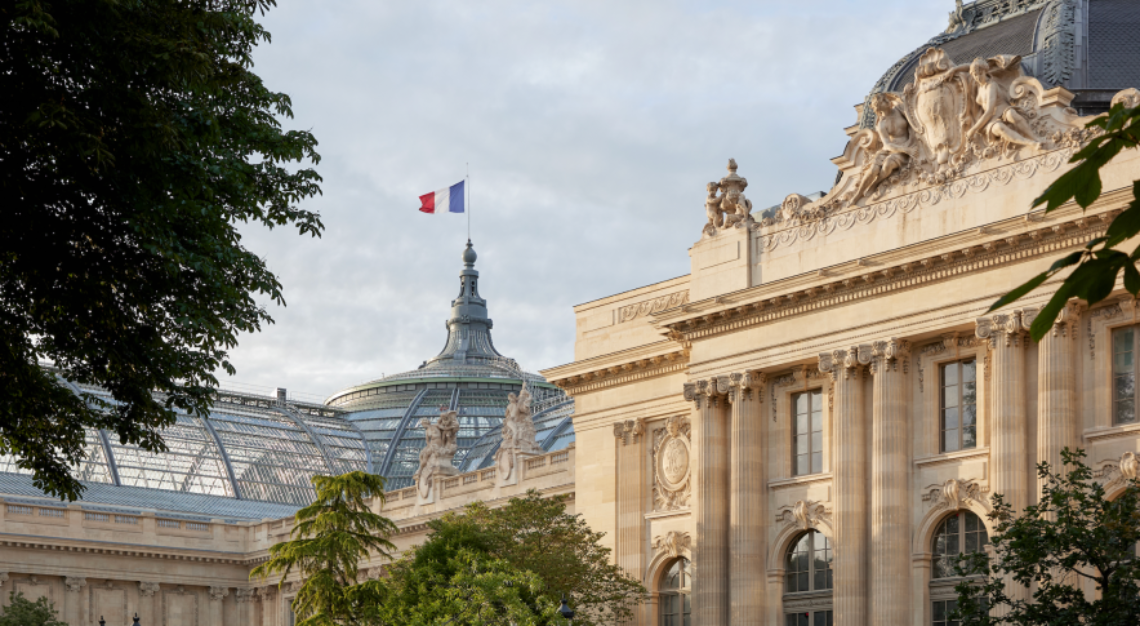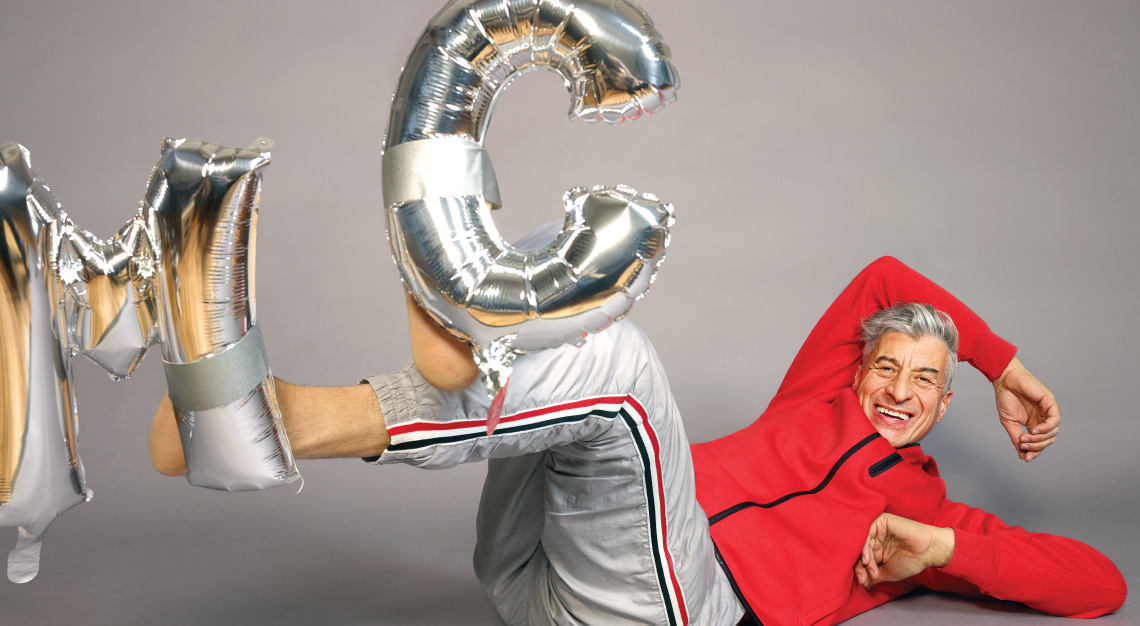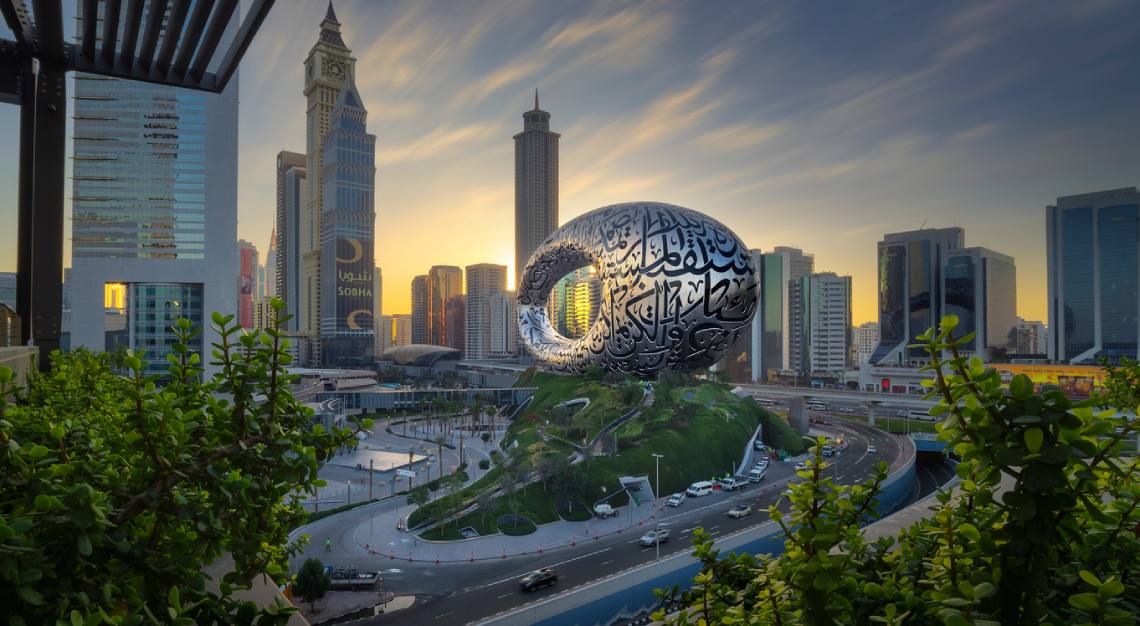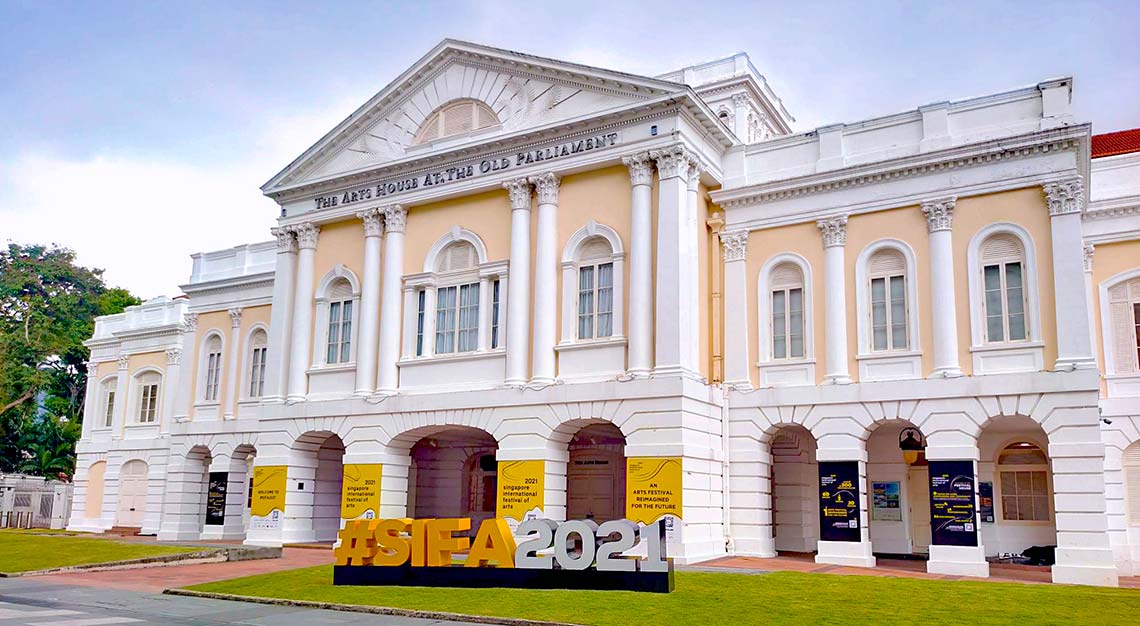As the Grand Palais reopens and other spots shut for extensive overhauls, the French capital reveals what it takes to preserve its treasures—and its status
On a sun-drenched summer afternoon, museumgoers peered through three panoramic windows of the Grand Palais, Paris’s finest exhibition hall for more than a century, regular host to Chanel runway shows and groundbreaking art installations. They glimpsed the Beaux Arts structure’s glass-and-steel nave, its reseda green riveted beams, newly refreshed, and its grand staircase restored with original bronze details. It is one of several previously obscured perspectives that visitors can now discover, along with vast galleries unseen since 1937. The exhibition hall reopened in its entirety in June after a meticulous four-year overhaul led by Chatillon Architectes, clocking in at close to €500 million.
The 125-year-old complex has been brought back to life with 50 percent more modular exhibition space open to the public, along with a mezzanine-level café and a monumental new brasserie with 60-foot ceilings, designed by the French interior architect Joseph Dirand. It’s a noticeable transformation of the Grand Palais following a temporary reopening to host Olympic fencing and taekwondo in 2024. “True luxury is space,” says François Chatillon, the architect whose firm spearheaded the restoration. “Society’s natural tendency is to close itself off, but we need to breathe; we need spaces that breathe.”
Conceived in only three years for the 1900 World’s Fair, the glass-domed Grand Palais was meant to embody France’s architectural and cultural might. That legacy continues, partly as proof that Paris projects its soft power not only through fashion and art, but through the buildings that showcase them.
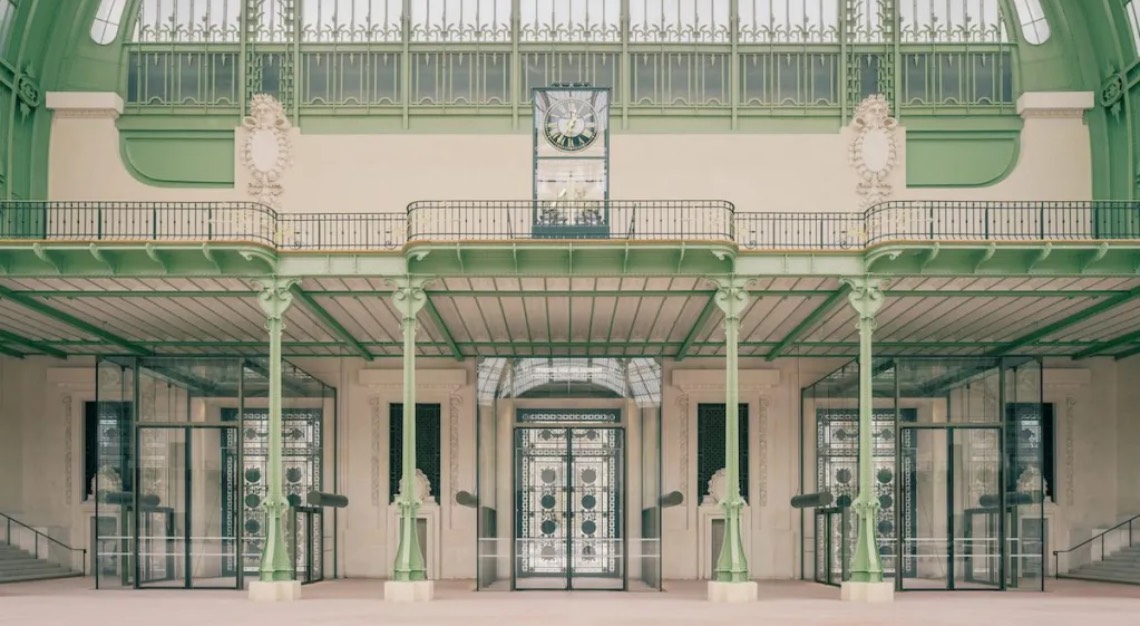
Of course, no triumph is permanent. As the Grand Palais returns, other cultural icons retreat behind scaffolding. It’s all part of a perpetual cycle in Paris, necessary for the city to uphold its cultural excellence for an ever-swelling global audience that the Paris Tourism Observatory predicts will reach 37.4 million visitors by the end of the year. And it’s all reshaping the cultural landscape.
The five-year closure of the Centre Pompidou, the city’s third-most visited museum and central home of modern and contemporary art, is among the marquee changes this fall. Not even 50 years old, the Renzo Piano and Richard Rogers–designed building shut its doors for an estimated €358 million ($383 million) overhaul—with €50 million thrown in from Saudi Arabia for a cultural partnership—that will strip asbestos everywhere from its ceiling to its façade, bring fire safety and accessibility in line with modern codes, and rethink both its mechanical systems and its galleries for a new generation of visitors. While most of its programming will be housed at the Grand Palais in the meantime, visitors miss the chance to experience the distinctive layout of the museum, with its colourful exposed pipes, ducts, and escalators, an interactive play zone for kids, and some of the most striking views of the city skyline.
Meanwhile, technical and structural upgrades at the Opéra Garnier—primary home of the Paris opera and ballet—to last until 2029, disrupting stage performances for at least two of those years. Younger sibling the Opéra Bastille will close for its own restoration between 2030 and 2032—projects that will cost €450 million (more than $525 million), a quarter of which will be state financed. Across the Seine, the Musée d’Orsay and its famed Impressionist masterworks is gearing up for a rolling renovation through 2027 that will reconfigure its entrance, create a new gallery for contemporary photography, and set up a terrace on the fifth floor, without ever fully closing its doors. In October, the Fondation Cartier, a multidisciplinary hub for contemporary art, finally returns, this time with a new Jean Nouvel–designed home on the Place du Palais Royal, once occupied by the Louvre des Antiquaires.
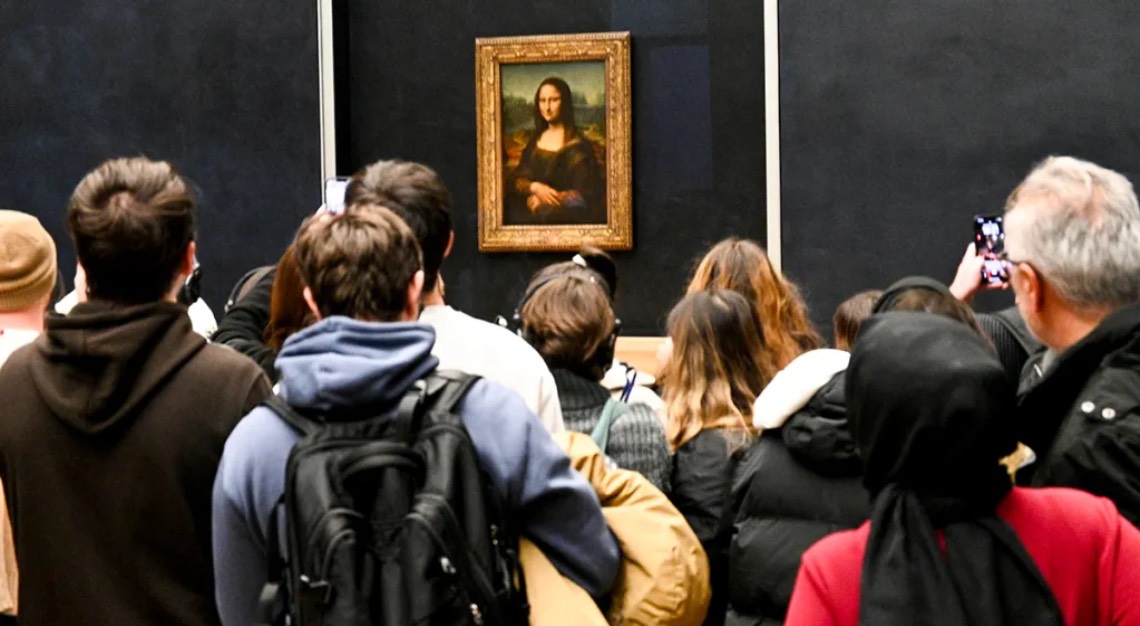
Nowhere is the strain of age and visitor impact more palpable than at the Louvre. With nearly nine million people packing its halls each year, and 25,000 daily visitors to the Mona Lisa alone, the royal residence-turned-museum is struggling to bear the pressure it was never built to accommodate. The breaking point came this summer when staff staged an impromptu strike, citing untenable working conditions. As Louvre director Laurence des Cars warned in a memo to cultural minister Rachida Dati at the start of 2025, there are leaky roofs, “worrying temperature variations that endanger the conservation of the artworks,” and inadequate food options and restroom facilities.
The issue of overcrowding and its impact on the visitor experience has been heavily debated among museum professionals for decades. “Everyone acknowledges it, but museums need the revenue,” says Susan Taylor Leduc, an art historian and certified guide who runs Picturesque Voyages Travel. Limiting the number of visitors also runs counter to a museum’s purpose of offering arts programming to the greatest number of people. Naturally, says Taylor Leduc, there’s tension between ensuring economic growth and preserving cultural heritage. “This is where certified guides have a role to play, as cultural mediators,” she adds. “They are one of the best ways to assure quality experiences for visitors,” especially as museums try to remain at the top of the cultural ladder while navigating the challenges of balanced tourism.
When wear and tear shows, especially at the most visited museum in the world, there is a responsibility to act. “It’s a matter of national identity,” insists François Chatillon, whose firm will tackle the project to modernize the Louvre by 2031 and alleviate some of the congestion with new exhibition spaces. “The Louvre is no longer up to the standard of expectations,” he adds, noting that the impact of tourism is part of what drives the constant but carefully choreographed cultural reshuffle—and the need to shore up the country’s soft power. “Let’s face it, France doesn’t have much left to sell, apart from culture and fashion. So we have to be stellar.”
Behind these wholesale upgrades and renovations and discussions around cultural policy is a gamble worth billions of euros: that Paris can reinvent its cultural infrastructure without losing the intangible qualities that made it legendary in the first place.
Practically, that translates to quieter wings, rerouted entrances, scaled-back services. Yet the revolving door of Paris’s cultural landmarks is never truly a loss. Travelers can see blockbuster works migrated to dramatically more spacious venues, or redirect their attention to institutions they might have otherwise overlooked: the Musée d’Art Moderne, the Palais de Tokyo, more intimate collections at the Musée Rodin or private foundations like the Pinault Collection at the Bourse de Commerce, just a few of the 130-plus museums in Paris’s city limits.
Paris museum openings and closures for 2025
Grand Palais: Reopened as of June 2025
Centre Pompidou: Closed end of September 2025, with works on display at the Grand Palais
Opera Garnier: Open during ongoing façade renovations; stage closure between summer 2027 and 2029
Opera Bastille: Stage closure for two seasons between 2030 and 2032.
Fondation Cartier: Open 25 October 2025.
This story was first published on Robb Report USA. Featured photo by Antoine Mercusot / Chatillon Architectes
